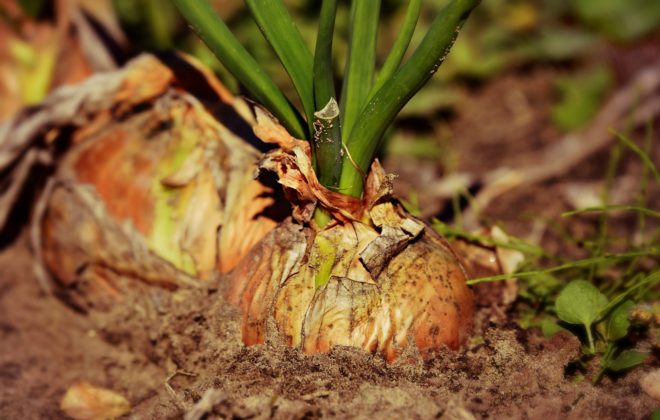Being Proactive Against Fungal Disease in Onions
Many growers have been lucky and rarely dealt with disease, but this season is not one of them. One way to maximize your crop’s potential is to be proactive about onion disease prevention. Unfortunately, once disease is discovered, often it may be too late to salvage the crop without extensive effort and investment in fungicides.
While you can treat, it is difficult to “play catch up” as disease spreads quickly through airborne spores. Not being proactive can lead to decreased yields once disease has spread. Too often, a wonderful onion crop spoils in storage due to disease before it can be completely consumed. In nearly every case, it’s because fungal diseases were acquired while the onions were still in the ground.
A big culprit in onion disease- leaf wetness
All onion storage diseases share one starting point: leaf wetness. If you get more than 20 inches of rain in your area annually, conditions favor the development of such diseases. This season many parts of the country that may not typically receive large amount of rain have seen higher amounts that normal. Moisture in the foliage creates the perfect environment for disease in your onions. Sadly, once an onion becomes obviously diseased, it’s too late to do anything to save it. Prevention is the key here. You have to take steps to block the diseases from ever taking hold in the first place.

What does this mean?
This means treating your plants regularly with fungicides. You need to keep fungal spores from attaching to the leaves during the growing season which is why a preventive fungicide program is so important whether chemical or all-natural. We offer Mancozeb Fungicide with Zinc for a conventional option and OxiDate for an organic option.

Prevention Strategies
Here are some other tips for keeping your onions disease-free from planting through storage:
- Use pre-emergent herbicides during bed preparation. Onions don’t like to compete with weeds.
- Rotate the crops every three to four years.
- Avoid fields with any disease history.
- Plant in areas where there’s good drainage and air movement to promote rapid drying of foliage, and be sure to orient the rows to take advantage of the predominant airflow.
- Avoid overhead irrigation.
- Stop fertilizing your onions about a month prior to harvest or when they start to bulb.
- Stop watering once you see the first top fall over or about a week before harvest.
- Harvest only after the onion tops are well matured.
- Cut the tops when you don’t feel any moisture when you rub right above the neck with your thumb and forefinger.
- Harvest and handle bulbs gently to avoid wounds, and don’t let them get rained on.
- Promptly cure the bulbs in a well-ventilated area, so the necks are completely dry before the crop is stored.
- If you see any damaged or rotting onions among a stored batch, remove them immediately, hopefully before they have a chance to taint the others.
If you’ll follow these steps, your stored onions are much more likely to last until you’ve eaten them all!





Where can I buy your fertilizer and fungicide
https://www.dixondalefarms.com/category/growing_aids